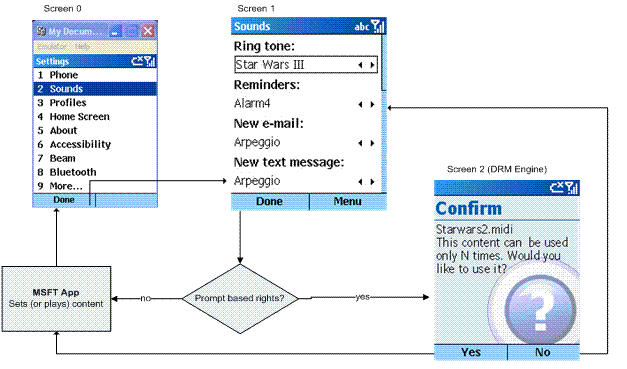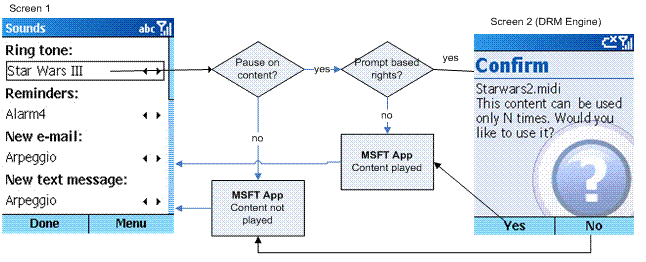 Important: Important: |
|---|
| This is retired content. This content is outdated and is no longer being maintained. It is provided as a courtesy for individuals who are still using these technologies. This content may contain URLs that were valid when originally published, but now link to sites or pages that no longer exist. |
Microsoft recommends that applications that persist content, such as the Home screen that persists the background image, check at a regular interval for expired time-based rights. The PersistentViewconfigurable registry setting can be used for this purpose. For more information see FDRM Registry Settings.
The following illustrations shows an example of the UI flow for FDRM-protected content when you have active rights.

The following illustrations shows an example of the Sounds UI where the FDRM-protected content is used and previewed.

 Note: Note: |
|---|
| The hardware Back button always returns to the previous screen. |
The following table shows the image set associated with each screen.
| Screen | Image set | Description |
|---|---|---|
|
Screen 1 |
Image Set 1 |
Settings, Sounds, and Home Pages. Applicable to any Microsoft application. If the user tries to use or preview prompt-based rights, the FDRM engine UI is shown asking the user for consent before adjusting rights status and playing the sound. When Doneor a Menu>Playoption is selected and the rights are not valid, see Example Flow: Use of FDRM-Protected Content with Expired Rights and No Rights Renewal. When preview is attempted for content with no rights, no preview is allowed. For Sounds accessed through the Settings screen, it is recommended that the content does not play and no FDRM UI is shown. |
|
Screen 2 |
Prompt-based rights notification (FDRM engine). This is only necessary for prompt-based rights. For variants of these screens see Image Set 6: Prompt-Based Rights Notification. |








 See Also
See Also